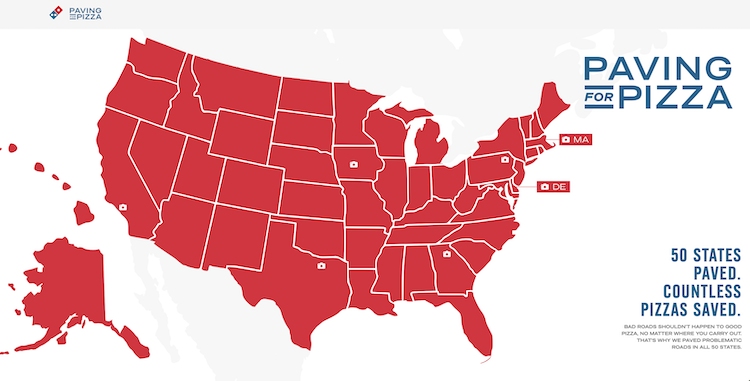
Market Research PR: How the Numbers Stack Up
As we’re talking about market research, let’s start with a few questions: Do you know what market research is? Do you know why it’s an important part of your public relations strategy? And do you have any idea what impact market research for PR can have on your public relations campaigns?
If the answer is no, good news. Because we’re going to deep dive into the specifics of how market research can help PR campaigns. But before we do, let’s take a look at the broader picture.
What exactly is market research?

Put simply, market research is the process of gathering, analysing and interpreting information about a specific market. It’s an essential activity for businesses to innovate and stay competitive.
From focus groups and surveys to product testing and interviews, there are various ways to gather information, which can provide valuable insight for your business.
It can help you:
- Test the viability of new products or services
- Identify opportunities for growth
- Stay on top of the latest trends
- Monitor the competition
- Ascertain your customers wants and needs.
In addition to the above, specific market research for PR can shape your public relations activity. But before we look at how and why, let’s also look at a definition of PR.
Marketing company CoSchedule defines public relations as ‘the actions a business or organisation takes to shape perceptions of its brand and develop relationships with its customer base, target audience, partners, and other important stakeholders.’
What better way to build positive relationships than by listening to your audience, understanding their wants and needs, and acting on what you hear? This is where market research and PR come together.
Reputation management

Every organisation, no matter its size, depends on its reputation for survival.
Bad reviews, unfavourable feedback and negative press coverage are kryptonite to brands, particularly in the age of social media, where bad news moves faster than a TikTok trend.
The good news is market research can help keep the brand love rolling in. And it doesn’t have to be flashy, expensive, or complicated.
Let’s look at two ways you can use market research to support your public relations strategy.
1. Brand Perception Surveys
A brand perception survey is a painless and cost-effective way to help you figure out what people think of your business and how it stacks up against the competition.
Some of the key questions to ask include:
- When you think of [the brand], what comes to mind?
- What feelings do you experience when you think of [the brand]?
- How would you describe your level of emotional attachment to [the brand]?
- How would you describe [the brand] to a friend?
- How would you describe your last experience with [the brand]?
- On a scale of 1-10, how likely are you to recommend [the brand] to a friend or colleague?
The results can help you resolve the gap between how you want people to feel about your brand and how they actually feel.
2. Social media monitoring
A subset of market research, social media monitoring is the process of identifying and analysing mentions of your brand on social media platforms, forums, and websites. It gives you a real-time glimpse into what people are saying about you – whether good and bad.
In the digital age, where people can share opinions at the click of a button, this is invaluable – particularly when it comes to crisis management.
Why? The ability to track the news cycle around your brand 24/7 means you can get ahead of an impending crisis. Armed with this insight, you can avoid, or at the very least, mitigate the fallout.
It’s saved many a teetering brand from disaster. Take global fast-food chain, Burger King, for example. Back in 2012, a BK employee posted an image of himself standing in bowls of lettuce, with the caption: ‘This is the lettuce you eat at Burger King.’ Gross, right?
As you can imagine, the post went viral quicker than it takes to fry some, um…fries.
The image had the potential to bring the fast-food giant to its knees. But thanks to some pro-active social media monitoring, Burger King’s PR team spotted it and took swift action.
The employee was promptly identified and fired, and Burger King shared the crisis resolution on social media before any serious damage was done.
How do you do social media monitoring?

So, we’ve established that social media monitoring is important, but how do you do it?
You have two options. You can spend hours googling your brand name and trawling through social media sites, search engines, review sites and blogs. Or you can get all the data in seconds via a handy social media monitoring tool.
There are lots to choose from. Some are free, some are paid for, but they all offer slightly different things.
Here are a few options to mull over:
Hootsuite can track activity across a number of social networks and platforms including LinkedIn, Twitter, Facebook, Google+, Foursquare and WordPress.
Digimind measures brand sentiment, enabling you to see if perception of a keyword is negative, neutral, or positive. You can also see how the public perceives your brand versus your competitors.
Mediatoolkit can help you boost brand awareness. It also enables you to see what your customers think of your brand, what your competitors are up to and what trends are arising in your niche.
Meltwater provides insights on brand reputation and customer satisfaction.
Market Research for PR: What are the benefits?

We’ve looked at how to carry out market research for PR, now let’s look at some key benefits of conducting it.
1. It can boost your credibility
PR market research can provide you with hard facts to back up the statements you make in your PR campaigns and pitches. This can boost the credibility of your stories.
Think about it. If I said, ‘PR is more effective than advertising,’ you’re unlikely to believe me. Why would you? It’s an opinion with no substance.But if I said, ‘a study found that PR is 90% more effective than advertising,’ chances are you’d sit up and pay attention. Why? Because the statistic shows there was a process involved in reaching that conclusion – tangible research. It’s not just an opinion plucked out of thin air.
Reputable publications demand reliable, credible information. So, having legitimate data behind your stories is extremely valuable.
Also, leading with a strong, punchy, statistic-driven headline supported with reliable data is an effective way to grab attention from the media. It worked for my client, global recruitment firm, CRCC Asia.
In their press materials, I included headline-grabbing statistics, such as the prediction that 25,000 students would travel to China for work experience with the company seeing demand for its internships in the country rocket by 300%.
These impressive stats made the story much more attractive to the media, resulting in a wealth of high value coverage.
2. Better targeted PR campaigns
Market research can shine a light on issues that affect your target audience. Once you know what they care about, you can build PR campaigns around them.
Just like Domino’s Pizza did.
Through market research, the global pizza chain discovered that many of their customers in towns and cities across the US were negatively impacted by potholes. Yes, you read that right. Potholes.
In response to the pothole epidemic, they launched a ‘Paving for Pizza’ campaign. ‘Bad roads shouldn’t happen to good pizza’ they said in the visual. I think we can all agree on that.
Dominos could have left it there and moved onto something else. But instead, they went a step further by funding pothole repairs in various cities across the United States. The PR results were impressive. Customers were delighted and the brand received tens of thousands of positive organic mentions in its first week, leading them to expand the campaign across all 50 states.
A tasty result for Domino’s and none of it would have happened without market research.
Interested in other successful public relations campaigns? Read: Famous PR Campaigns.
3. Stronger relationships with customers
Remember the definition of public relations mentioned earlier? Let’s recap.
Public relations is all about shaping brand perception and building meaningful relationships with your customers.
There are few better ways to build positive relationships with customers than to invite them on the product development journey. After all, they know what they want, and you want them to want your product. So, it makes sense to include them in the process.
Think about it. You may think you have the best product idea in the world, but if your customers disagree, you’re flogging a dead horse. And if you keep getting it wrong, you could turn them off altogether.
So, it’ll pay to get their thoughts on elements such as useability, price, and packaging before you throw a ton of money at it.
4. PR campaign measurement
We’ve talked about ways to carry out market research for PR campaigns and looked at some examples, but how do you measure their success?
The impact of a PR campaign can be hard to track. This is because unlike other forms of marketing, such as online advertising, there are no specific metrics available to measure it.
With advertising you get cold hard facts:
- x number of people clicked on your website
- x number of people signed up to your newsletter
With PR it’s not so clear-cut. It’s all about reputation, which is harder to quantify. Harder, but not impossible.
Using market research, you can measure consumer attitudes and brand awareness before, during and after a PR campaign to establish its effectiveness.
For more information on measuring digital PR campaigns, read: What is Digital PR?
Not just for start-ups

You may think that PR market research is an activity for new companies only. But that’s not the case. Many of the world’s biggest, most trusted brands test their ideas on a control group before letting them loose on the public.
Take LEGO. When the much-loved toy brand launched, it was primarily aimed at boys. But in 2008, keen to launch a range for girls, they embarked on a four-year global study involving 4,500 girls, to understand their playing habits and gather feedback on their preferences in terms of colour, packaging, themes, and the size of the figurines.
As a result of the study, LEGO launched their ‘Lego Friends’ line for girls in 2012 and it turned out to be one of the biggest successes in the brand’s history.
Without PR market research, it may have been a different story.
In-house or agency?

Maybe, after reading this article, you’ve decided to conduct some public relations market research. But how are you going to do it? Are you going to keep it in-house or employ a market research agency?
Let’s look at the arguments for each.
In-house
Cost: Perhaps the biggest benefit to conducting market research in-house is the perceived cost savings. However, it’s worth bearing in mind that unless you have a dedicated market research specialist on your team, the research may not be efficient or unbiased.
Company knowledge: Another benefit of in-house market research is the depth of knowledge that you and your team have about your organisation and its products/services.
Security: Non-disclosure agreements are all well and good, but there’s always a risk of information being leaked when dealing with a third-party organisation.
Conducting market research in-house is a blog topic in its own right. If you choose this route, I recommend reading ‘How to do market research: the ultimate guide’ by Survey Monkey. It explains the process step-by-step, in detail.
Outsource
ROI: Market research professionals conduct market research day-in, day-out. They are experienced in designing survey questionnaires, running focus groups and asking the right questions. So, they’re likely to get better results.
Unbiased data: You want to ensure your insights are free of bias. As noted by Raconteur Magazine: ‘Bias is the tombstone of research and it is hard to cover up. Most people are proud of where they work and have seen first-hand the effort going into products and services. It is human nature to want to defend these efforts and a forgivable, if ruinous, instinct.’
Quality of responses: Customers may find it easier to be honest with an outsider, particularly if they have a complaint about your business.
Final word on market research PR

When done well, PR market research can help you boost your reputation, bring you closer to your customers and help you avoid PR crises.






